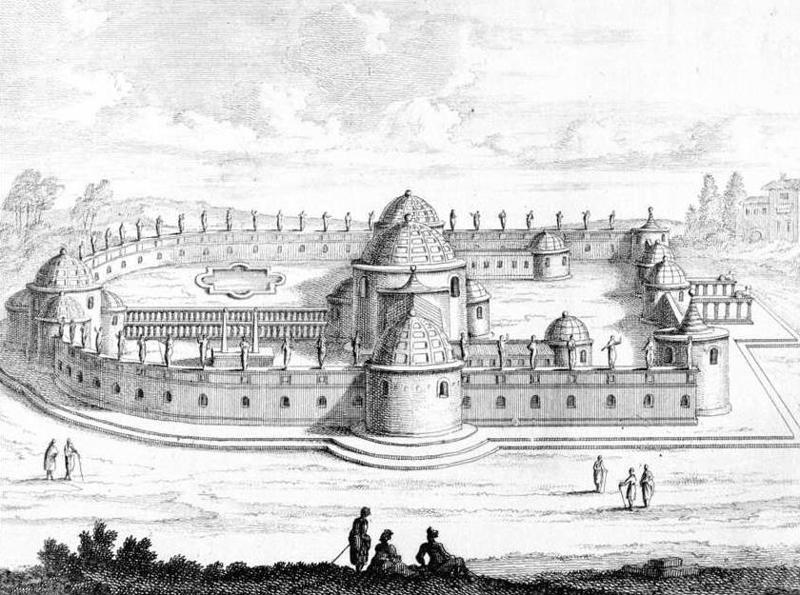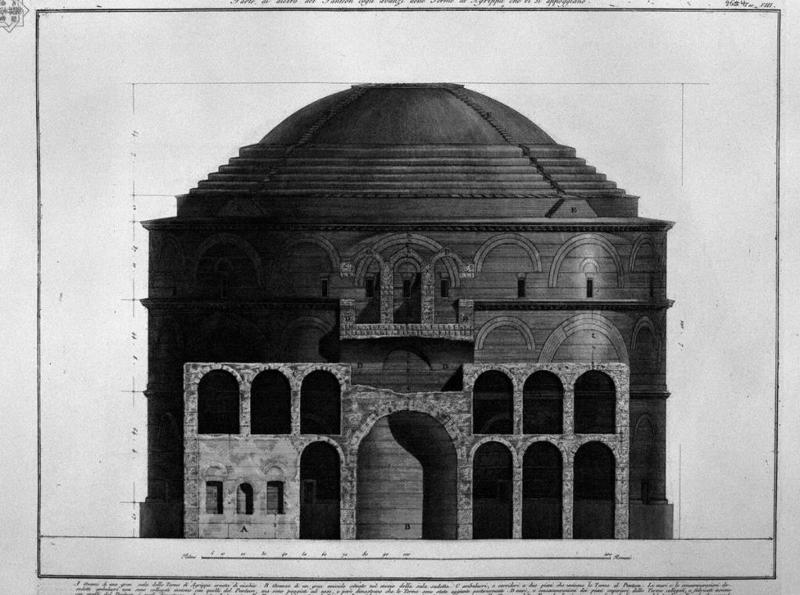Notable Sites from Rome’s Golden Age
Next, I visited the Thermae Agrippae (Baths of Agrippa), which is considered to be Rome’s first luxurious imperial bath completed by the end of the first century B.C.E. and mainly created for large-scale and public use.
The Baths of Agrippa covered a distance of 100-120 meters north and south while 80-100 meters east and west (see Image 3). To the north of the Baths of Agrippa, the Pantheon stood. To the south, the Porticus Pompei; to the east, the Saepta Iulium.
The Thermae Agrippae is beautiful inside and out. From the inside, there is detailed encaustic paintings and decorations throughout. The walls and vaults are embellished with stucco and terracotta tiles.
mn2904
4 chapters
6 Dec 2020
Baths of Agrippa (Thermae Agrippae)
December 13, 2020
Next, I visited the Thermae Agrippae (Baths of Agrippa), which is considered to be Rome’s first luxurious imperial bath completed by the end of the first century B.C.E. and mainly created for large-scale and public use.
The Baths of Agrippa covered a distance of 100-120 meters north and south while 80-100 meters east and west (see Image 3). To the north of the Baths of Agrippa, the Pantheon stood. To the south, the Porticus Pompei; to the east, the Saepta Iulium.
The Thermae Agrippae is beautiful inside and out. From the inside, there is detailed encaustic paintings and decorations throughout. The walls and vaults are embellished with stucco and terracotta tiles.

There is a large central dome, known as the Arco della Ciambella, with patterns of lattice ribbing around it (see Image 4). On the outside, an impressive 300 statues are erected in the Campus Matius including a fallen lion located between the Euripus and the stagnum. Additionally, I could see the famous Apoxyomenos statue (an athlete with his oiled skin being scraped) right in front of the baths.
Looking around, I learned that the Baths of Agrippa were named after the brilliant military general and strategist Marcus Vipsanius Agrippa, the heir and confidant of Augustus, who deeply cared for the public good. When he passed away in 12 B.C.E, he intentionally desired his baths be left to the Roman people so that all social classes could enjoy an elite experience free of charge. Thus, Augustus honored Agrippa’s wishes and also gave the people four hundred sesterces each.

I was always intrigued by the importance of baths in Roman society. While there, I learned that beyond providing simple hygiene, baths were hubs for cultural and social interaction. It didn’t matter what social class or position one had, the baths offered a communal experience that quickly became the center of social life. This is exactly what the Thermae Agrippae represents.
Image 3: A sketch of the Thermae Agrippae
http://www.myvisita.it/en/poi-culturali/baths-of-agrippa.aspx
Image 4: A section of the Thermae Agrippae
https://www.roger-pearse.com/weblog/tag/baths-of-agrippa/
Sources:
https:lccn.loc.gov/30010804
http://www.jstor.org/stable/10.3764/aja.123.1.0045?refreqid=search-gateway:6ba9ba4d839743129bbf8c5ea55c76f6
Share your travel adventures like this!
Create your own travel blog in one step
Share with friends and family to follow your journey
Easy set up, no technical knowledge needed and unlimited storage!